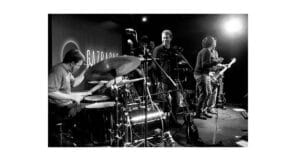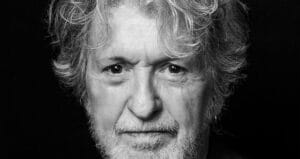Tangerine Dream: The Pioneers of Electronic and Ambient Music
Tangerine Dream, formed in 1967 in West Berlin, Germany, is one of the most influential electronic music groups in history. Founded by Edgar Froese, the band’s innovative use of synthesizers, sequencers, and ambient soundscapes helped shape genres like electronic, ambient, progressive rock, and new-age music. Over their decades-long career, Tangerine Dream released over 100 studio albums and soundtracks, carving a niche as pioneers of experimental and cinematic sound.
1. Formation and Early Days
Tangerine Dream emerged during the experimental music wave of the 1960s. Edgar Froese, inspired by surrealist art and contemporary composers like Stockhausen and Varese, sought to push music beyond conventional rock frameworks.
Original Lineup:
- Edgar Froese – Founder, synthesizers, guitars
- Klaus Schulze – Drums (1969–1970, only on the debut album)
- Conrad Schnitzler – Cello, effects (1969–1970)
The band’s name was inspired by the lyrics of The Beatles’ Lucy in the Sky with Diamonds, referencing “tangerine trees.”
2. Key Phases in Tangerine Dream’s Evolution
Tangerine Dream’s career is often divided into distinct eras, defined by shifts in personnel and their signature sound.
1. The Pink Years (1970–1973): Experimental Beginnings
Their earliest works were avant-garde and heavily influenced by krautrock and the burgeoning electronic music scene.
- Debut Album: Electronic Meditation (1970)
- Sound: Experimental, chaotic, and largely acoustic, featuring unconventional instruments like prepared pianos and cello.
2. The Virgin Years (1974–1983): Classic Era
Signing with Virgin Records marked a significant turning point. This era saw the development of their sequencer-driven, ambient sound, earning them global recognition.
- Albums:
- Phaedra (1974): A groundbreaking album, blending sequenced rhythms with ambient textures.
- Rubycon (1975): A deep dive into meditative and evolving soundscapes.
- Stratosfear (1976): Incorporating more melodic structures and acoustic instruments.
- Sound: Hypnotic, layered, and cinematic. This era cemented their reputation as pioneers of electronic music.
3. The Soundtrack Years (1977–1990): Film Score Innovators
Tangerine Dream became synonymous with atmospheric film soundtracks during this period, composing for Hollywood directors and beyond.
- Notable Film Scores:
- Sorcerer (1977)
- Risky Business (1983)
- Legend (1985)
- Firestarter (1984)
- Impact: Their scores blended ambient electronics with dramatic tension, influencing the soundtracks of the 1980s and beyond.
4. The Melrose Years (1988–1996): New-Age Exploration
This period saw Tangerine Dream embrace a more melodic, accessible, and new-age direction, with increased use of digital synthesizers.
- Albums:
- Optical Race (1988)
- Melrose (1990)
- Sound: A more polished and structured approach, moving closer to instrumental pop and new-age music.
5. The Quantum Years (2014–Present): Modern Era
After Froese’s death in 2015, the band continued under the leadership of Thorsten Quaeschning, with a renewed focus on their early experimental roots.
- Albums:
- Quantum Gate (2017): Inspired by Froese’s sketches and ideas.
- Raum (2022): A return to their ambient and sequencer-driven origins.
3. Key Albums and Essential Tracks
1. Phaedra (1974)
Often considered their magnum opus, Phaedra revolutionized electronic music with its use of the Moog synthesizer and sequencers.
- Key Tracks: Phaedra, Mysterious Semblance at the Strand of Nightmares
- Impact: Landmark album in ambient and electronic music history.
2. Rubycon (1975)
This album refined the sound of Phaedra, offering a continuous, immersive listening experience.
- Key Tracks: Rubycon, Part 1; Rubycon, Part 2
- Impact: A quintessential ambient masterpiece.
3. Force Majeure (1979)
A blend of progressive rock and electronic music, with Froese’s guitar featuring prominently.
- Key Tracks: Cloudburst Flight, Thru Metamorphic Rocks
- Impact: Marked a shift toward more structured compositions.
4. Sorcerer (1977, Film Score)
A haunting and atmospheric soundtrack for William Friedkin’s thriller.
- Key Tracks: Main Title, Betrayal (Sorcerer Theme)
- Impact: Helped popularize electronic film scores.
5. Quantum Gate (2017)
A modern tribute to Froese’s vision, blending their classic sequencer-driven style with contemporary production.
- Key Tracks: Sensing Elements, It Is Time to Leave When Everyone Is Dancing
4. Notable Members and Contributions
- Edgar Froese: Founder and visionary, Froese’s work defined the band’s direction and innovation.
- Klaus Schulze: A key figure in their earliest experimental sound, later achieving solo fame.
- Peter Baumann: Integral during the Virgin years, contributing to their most iconic albums.
- Christopher Franke: Architect of their sequencer-based sound, especially during the Virgin and soundtrack years.
- Thorsten Quaeschning: Current leader, maintaining the band’s legacy while modernizing their sound.
5. Musical Style and Innovations
Tangerine Dream’s music is characterized by:
- Innovative Use of Technology: Pioneers in using synthesizers like the Moog, sequencers, and Mellotron.
- Cinematic Soundscapes: Their music often evokes vivid imagery and emotional depth.
- Blending Genres: Merging electronic, ambient, progressive rock, and classical elements.
6. Legacy and Influence
Tangerine Dream’s influence spans across multiple genres, from electronic music to film scoring. They paved the way for artists like Jean-Michel Jarre, Vangelis, and modern electronic producers.
Influenced Artists:
- Brian Eno: For ambient music exploration.
- Moby: For blending electronics with emotional depth.
- Hans Zimmer: For electronic-driven film scores.
7. Interesting Facts
- NASA Connection: Their music was included on the playlist for the NASA crew aboard the Space Shuttle Endeavour in 1993.
- Innovative Performances: Tangerine Dream was one of the first bands to perform live with synthesizers and sequencers, adapting their studio sound to stage performances.
- Edgar Froese’s Philosophy: Froese believed in “sound painting,” creating immersive audio experiences that transported listeners to otherworldly realms.
8. Conclusion
Tangerine Dream is a cornerstone of electronic music, with a legacy defined by innovation, exploration, and timeless artistry. From the hypnotic sequences of Phaedra to their groundbreaking film scores, their music has inspired generations of musicians and listeners alike. Whether you’re delving into their ambient masterpieces or cinematic soundtracks, Tangerine Dream offers a journey through sound that remains unmatched in scope and creativity.




